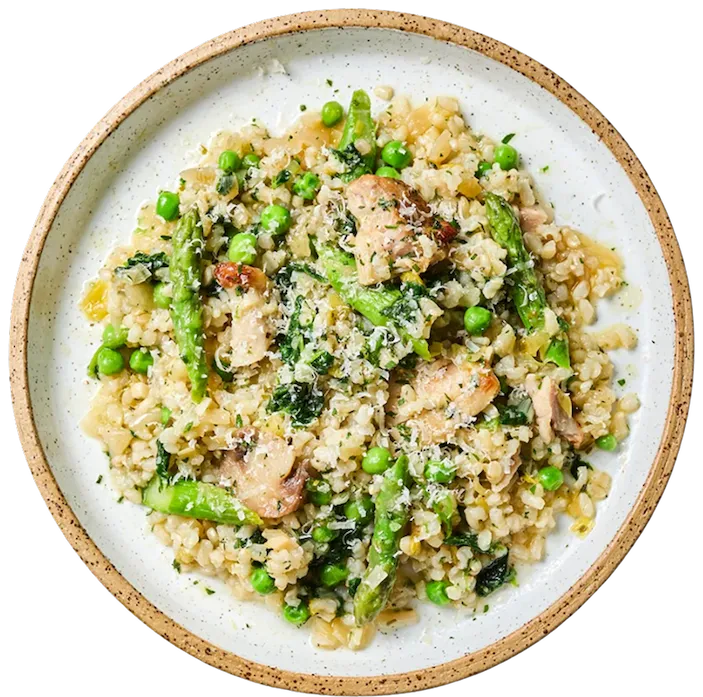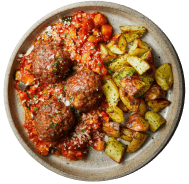Plant Diversity: How To Eat More Plants
How Do I Eat A More Diverse Range Of Fruit and Vegetables?
And do I really need to eat 30 different plants a week? It's a hot topic at the moment, with our gut microbiomes coming into focus. Our guide will help you realise it's easier than ever to eat a diverse range of fruit and vegetables, and help to improve your gut microbiome.
With research showing that people who eat more than 30 different plant types a week have a more diverse gut microbiome, Registered Dietitian Laura Tilt shares simple ways people can embrace the challenge, and why it’s not as difficult as it might sound.
Why 30-a-week is the new five-a-day...
We are all aware of the 5-a-day rule, however, emerging evidence shows that eating 30 different plant-based foods a week may be linked with better gut health, and in turn can have a positive impact on your cancer risk, energy levels, mood, weight and general health (2).
Research from the American Gut Project showed that people who eat more than 30 different plant types a week have a more diverse gut microbiome compared with those who ate 10 or fewer. The researchers also found that people who ate 30 plant types had more bacteria that produce short chain fatty acids (linked with a lower risk of bowel cancer (1).
Different plant types contain distinct types of fibre, prebiotics and ‘bioactives’, that nourish different microbes. Microbial diversity is linked with better gut, heart and brain health and to thrive, these microbes need to be fuelled with a diverse range of plant foods.
Aim for 30 plant points
To help people eat a greater variety of plant based foods it helps to count plant points. Each plant-based food has a plant type score, which then contributes to the suggested 30 points a week.
Foods such as fruits, vegetables, wholegrains, beans and pulses, nuts and seeds all count as 1 point each – with herbs and spices contain ¼ point each.
Challenging yourself to consume 30 plant types a week may seem daunting, but once you understand what foods contribute to the plant type score, it can be achieved easily through snacking, cooking and trying different combinations each week. Wholegrains, nuts, seeds and spices all contribute towards your 30-a-week.
It’s important to highlight that raising your plant score each week doesn’t have to be difficult. It could simply be a case of blending leftover fruit and veg into a smoothie (rather than throwing it away), topping your morning porridge with fruits and seeds or adding extra frozen vegetables to your meal when cooking.
You’ll be amazed at how quickly you can reach the recommendation of 30 different plant-based foods each week and your health will thank you for it.!
Reaching 30 a week doesn't have to be hard.
Raising your plant score each week doesn’t have to be difficult – it can be achieved through cooking, snacking and trying different combinations.
It’s important to remember that it’s not just a case of eating more fruit and veg, as wholegrains, nuts, seeds and spices all count towards your 30-a-week also
Tips to help you hit 30
Here are some simple tips on how people can achieve their 30 a week
- Don’t throw away veg which is near it’s expiry! Why not try popping it into your morning smoothie instead. Blending veg can be a great way to increase your intake and foods such as spinach, cucumber and carrot make for perfect ingredients – plus, no food waste.
- Choose alternatives to your normal choices. A fan of pasta or find yourself eating rice regularly? Try swapping the white stuff for wholegrain, with each serving counting as 1 plant type. If you’re feeling adventurous, try experimenting with other wholegrain ingredients such as buckwheat noodles instead, which are the perfect base for a stir fry (a dish which is great for boosting your veg intake also!). Swap rice for quinoa or wheat pasta for spelt pasta, there are so many great grain alternatives out there!
- Utilise fresh herbs. With herbs counting as a plant type (1/4 point per serving), they can be an excellent and tasty way to reach your 30 a week. Herbs such as basil, coriander and oregano are a convenient way to boost dishes and can simply be dropped in when cooking or seasoning. They’re also a great, natural way to flavour food.
- Add a little extra here and there. Making overnight oats? Why not top it with fresh (or frozen) berries for a tasty and colourful enhancement or a sprinkle of seeds. Or why not add an extra two slices of tomato to your lunchtime sandwich? Reaching your 30 a week doesn’t have to be difficult, it’s just a case of embracing the little extras.
- Shop creatively. Experimenting with fruit and veg you’ve never tried before is not only beneficial, but an exciting way to shake up snacking and mealtimes also. Challenge yourself to pick up 1 or 2 fruit or vegetables you’ve never tried before (or that you don’t eat regularly) and have a go at fitting it into your week. Or make it a family challenge to try new plant foods each week and calculate everyone’s weekly score at the end of the week. Supplementing meals with ‘hidden veg’ can also be an ideal way of increasing your families plant type intake, especially if dealing with fussy children! Try adding some lentils into your Bolognese sauce.
Field doctor 'diversity score'
To help people increase their plant diversity we have given every Field Doctor meal a ‘plant diversity score’ and consuming just two of our meals each week, will give you over the recommended 30 weekly plant types.
- Malaysian Tofu Curry - 13.5 plant types included
- Sweet Potato Korma - 13 plant types included
- Field Green Risotto - 11.75 plant types included
- Chicken Jalfrezi - 12.5 plant types included
related content
more content: Gut Health
browse our ranges.
choose from one of our ranges or personalise your own menu from 60+ meals.
- low FODMAP

- eat well, live well programme

- gluten free

- high protein

- weight management

- ibs

- lowest calorie

- lower carbs

- mediterranean

- smaller range

- pcos

- lean + lighter

- menopause

- heart healthy

- plans

- full menu

- gift cards
- take the quiz